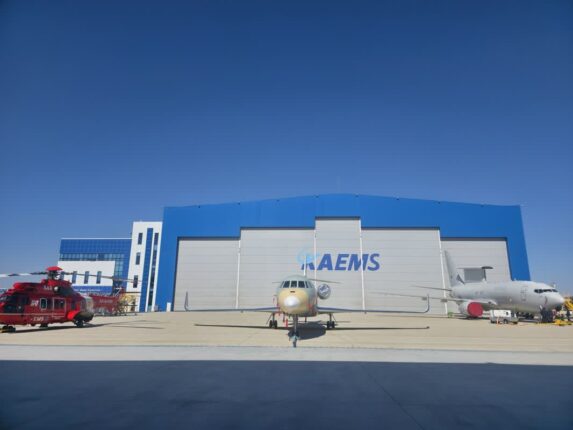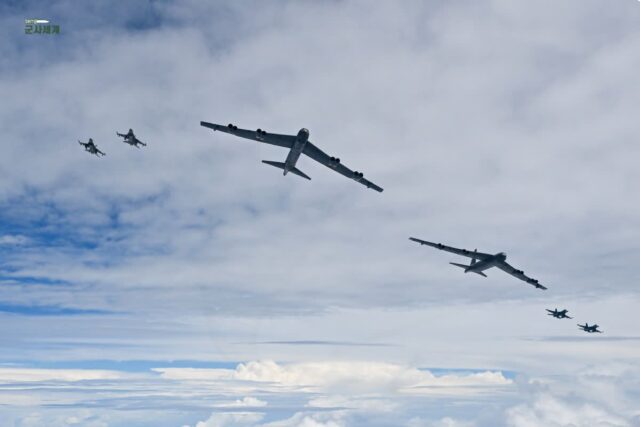







On October 25, the Republic of Korea Air Force (ROKAF) conducted a Comprehensive Joint Counter Exercise Against Large-Scale Enemy Aerial Intrusions as part of the 2024 Hoguk Exercise. This drill, designed to simulate full-scale war conditions, aims to enhance ROKAF’s rapid response capabilities and operational readiness in both peacetime and wartime scenarios.
The main exercise simulated a range of complex threats, including enemy manned and unmanned aircraft, ballistic missiles, and cruise missiles penetrating Korean airspace. All intercept and target destruction drills were conducted as simulations to ensure flight safety.
The exercise was led by the Air Force Operations Command (AFOC) and involved extensive coordination across ROK military branches. More than 70 aircraft—including F-35A, F-15K, KF-16, and FA-50 fighter jets, as well as KA-1 air control attack aircraft—were deployed alongside ground and naval air defense systems like Cheongung missiles, Patriot missiles, and Aegis destroyers.
The drill began with simulated incursions, as the Master Control and Reporting Center (MCRC) and Korea Air and Missile Defense (KAMD) operations center detected approximately 800 unidentified enemy tracks advancing south. Air Force assets replicated large-scale enemy targets, testing ROKAF’s ability to respond to simultaneous threats.
In response, fighter jets scrambled for emergency sorties, deploying air-to-air missiles and gunfire to neutralize enemy aircraft. National missile defense units coordinated intercepts using Cheongung-I and II and Patriot systems to counter enemy ballistic and cruise missiles.
The exercise included scenarios in which some cruise missiles evaded initial defenses, prompting patrolling fighters to intercept them in real-time. A Large-Scale Emergency Air Intervention (X-INT) mission was also simulated to target and neutralize enemy ballistic missile launch sites.
Navy Aegis destroyers stationed at sea provided a layered defense, intercepting cruise missiles in coordination with Air Force aerial assets.
Further enhancing joint operations, Army special operations teams conducted night infiltration missions to gather intelligence in hostile zones. This intelligence was relayed to air, ground, and naval forces, strengthening operational cohesion and effectiveness across branches.
Exercise Planning Officer
Col. Cho Yong Hyun, Director of Operations and Training at AFOC stated, “Given the recent increase in enemy provocations, this exercise accounts for potential aerial infiltration scenarios in a full-scale conflict. The Air Force is focused on building an integrated response capability, improving interoperability across air, ground, and naval forces to deliver a decisive response to enemy threats.”
The exercise will incorporate battlefield friction elements to increase realism, including simulated damage to friendly airbases and restricted MCRC functionality. These scenarios will help validate recovery procedures, enhancing the Air Force’s ability to operate effectively in challenging and diverse combat conditions.
















Comments0